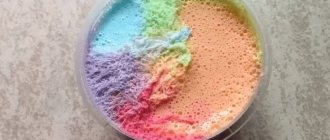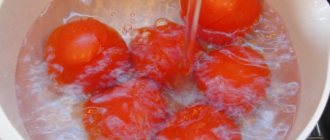Home Tips for the home
Some housewives, when wrapping vegetables for the winter, disinfect canned food with aspirin (acetylsalicylic acid).
At the same time, doctors believe that medications should not be put into pickling containers, and these preparations can cause significant harm to health.
This article will tell you in detail why and whether it is necessary to add aspirin when seaming vegetables. What is the best way to replace medicines in conservation?
The effect of the drug "Aspirin"
Aspirin has been widely used for a long time in the treatment of various diseases. It is an antipyretic, relieves pain, thins the blood.
Like other organic acids, this substance, when dissolved, forms an acidic environment - this solution has a detrimental effect on microorganisms.
This is the reason why housewives put a couple of tablets of a fever-reducing drug in jars when preserving winter seams. As a result, the twists have a very long shelf life and do not spoil for a long time.
What happens to the body if you eat canned food with aspirin?
Are tomatoes with aspirin harmful? Yes. Especially if the person using them is at risk of side effects. The harm from daily use of aspirin was proven by an international group of scientists from Australia and the USA, which conducted a study suggesting that aspirin can cause bleeding and cancer. The study results were published in The New England Journal of Medicine.
contraindications for “aspirin” preservation:
gastrointestinal diseases, especially of an erosive nature;
Source
The popularity of adding acetyl to twists has become:
— Availability of the drug
- Cheap price
— Found in almost everyone’s home medicine cabinet
However, despite the very great effectiveness of acetyl as a preservative, most doctors have said many times that this drug is a drug and its use in food preparation is dangerous and simply unacceptable.
How does aspirin work?
Acetylsalicylic acid, also known as aspirin, is widely used in medicine - it reduces fever, has an analgesic effect, and thins the blood. When dissolved, this substance, like other organic acids, creates an acidic environment. Such an acidic solution is harmful to microorganisms.
Therefore, back in Soviet times, housewives began to add 1-2 antipyretic tablets to jars of cucumbers and tomatoes. Such seams did not spoil for a long time. The availability of the medicine also played a significant role in the popularization of this method: aspirin was very cheap and was in the medicine cabinet in every home.
Despite the high effectiveness of aspirin as a preservative, many doctors have repeatedly expressed the opinion that this substance remains a medicine and its use in cooking is unacceptable due to the health hazard.
The World Health Organization (WHO) has issued a special ban on the use of acetylsalicylic acid in canning. This order made it possible to guarantee the absence of the drug and its derivatives in industrially prepared canned food sold in stores.
Reasons why drugs should not be used for preservation
- Medicines and their breakdown products, which are formed in the marinade, leave the body through the kidneys, thereby having a destructive effect on the organs.
- If you often use acetyl, pyelonephritis may develop.
- The toxic breakdown products of the drug and the acidic environment of the drug have a destructive effect on the intestines and stomach.
- Aspirin should not be used by people with peptic ulcers. It is better for healthy people to take acetylsalicylic acid after meals and wash it down with fresh milk.
- Frequent use of aspirin with food may cause allergic reactions to this drug.
All of the above negative reasons are a reason not to use medicines when preparing vegetables for the winter.
Especially losing their relevance in our time are such additives that have a very bad effect on the body and cause significant harm to health.
Why doesn't medicine have a place in food?
To understand what harm can be caused by preserving tomatoes with aspirin, you need to understand what acetylsalicylic acid is chemically. This substance is a derivative of salicylic acid, which was extracted from willow bark and has been used to treat fever for a long time. Salicylic acid, in turn, is a derivative of a substance toxic to humans - phenol.
Here are the consequences of consuming canned aspirin:
Any of the listed negative effects is a reason to permanently abandon the use of acetylsalicylic acid for canning. This decision is especially relevant these days, when there are many preservatives that do not cause harm to health.
How can I replace aspirin for preserving winter twists?
Nowadays, there are many analogues that can replace aspirin in the use of homemade preparations. At the same time, canned vegetables are also stored for a long time, and are much superior in taste to preparations twisted using acetylsalicylic acid.
- Vinegar. It is an excellent preservative that is used by most housewives. It perfectly prevents the development of bacteria and various microorganisms in the marinade. However, doctors do not recommend that people suffering from peptic ulcers, gastritis, diabetes of any stage, frequent increases in blood pressure (hypertension) and other diseases eat preserved foods using vinegar.
Table vinegar can be replaced with natural apple cider vinegar. Apple cider vinegar contains a lot of potassium, and besides, it is not so harmful to the body and health.
- Lemon acid.
- Juice of sour berries and fruits. For example, lingonberries, red currants, lemon, lime. These natural preservatives do not harm health; on the contrary, they have a beneficial effect on the body. For winter preparations, such preservatives will improve the taste of canned food and its shelf life for a long time.
Safe analogues
There are many safe substitutes for aspirin in modern and traditional cooking. The most common option is vinegar. It effectively prevents the development of bacteria in brine, but is not recommended for people with gastritis, stomach ulcers, diabetes, hypertension and many other diseases.
Instead of synthetic acetic acid, it is better to use natural apple cider vinegar. It is rich in potassium and is healthier.
Other substitutes for aspirin can be citric acid, juices of sour fruits and berries (lemon, lingonberries, red currants). These natural preservatives will not harm the body and will ensure good preservation and pleasant taste for canned food.
Source
Why do we add an aspirin tablet to the preservation? Is it harmful to our health?
Most men and women who are involved in capping have long been accustomed to putting one aspirin tablet in almost every jar. But doctors have a different opinion on this matter.
They believe that drugs have no place in conservation and that it can be harmful to our health. That is why in this article we will try to figure it out with you.
Dry salting method
This type of canning does not require liquid, herbs or much spice. However, the result will be an amazing treat. If the tomato harvest has been great, you can even use a large wooden barrel for harvesting. Tomatoes are stored in such containers for a very long time, gradually acquiring a completely different taste. It’s not for nothing that wooden containers have been popular for storing vegetables and fruits since ancient times. Of course, if you want to prepare several jars for testing, it is better to take large ones (3 or 5 liters).
Ingredients:
- a bucket of tomatoes;
- aspirin;
- 980 g salt.
Preparation:
- Choose tomatoes that are firm and have thick skin. First, arm yourself with a fork and prick each fruit.
- Place tomatoes in layers in a container, sprinkle each layer generously with salt.
- Be sure to take aspirin. How much is needed? For a bucket of fruits – packaging (10 pcs.).
- Cover glass containers filled to the top with nylon lids; it is better to place a heavy weight on the barrel and cover it with a lid on top.
Useful tips
Experienced housewives recommend keeping jars of closed cucumbers in a room where the temperature is below room temperature. A basement, cellar or garage is ideal for this. If the pickles are in the apartment, it is better to give preference to shaded corners (for example, in the pantry). Glass jars should not be left in the cold as they may burst.
Advice. You can preserve cucumbers with acetylsalicylic acid in a cold or hot way, with or without sterilization, by salting or pickling.
Regardless of this, three main rules should be followed:
- Before harvesting, the cucumbers are soaked in cold water for several hours.
- It is better to grind aspirin into powder before placing it in jars.
- With the hot preservation method, the jars need to be rolled up as quickly as possible, turned upside down and wrapped in a warm blanket.
Indications for use
In therapeutic practice, many diseases are known for which the use of aspirin and salicylates is indicated.
- Increased body temperature in adults with a cold or flu.
- Prevention of diseases of the cardiovascular system (stroke, heart attack, hypertension, angina).
- Prevention of varicose veins.
- Prevention of thrombosis and thromboembolism.
- Headache, toothache or menstrual pain.
- Rheumatic pains.
- Joint pain or muscle pain in the back.
"Summer Heat"
The combination of tomatoes with peppers and grapes is often found in many recipes; canning is popular due to the cheapness of the ingredients, ease of preparation and amazing taste. You can add new unusual notes by adding aspirin.
Ingredients:
- 900 g ripe tomatoes;
- 300 g grapes;
- 400 g pepper (multi-colored is more suitable);
- 1 l 450 ml water;
- 25 g salt (iodized is not recommended);
- 5 g allspice;
- 40 g garlic;
- 50 g dill leaves;
- 2 tables aspirin.
Preparation:
- Bring water to a boil.
- While the water is boiling, tightly fill glass containers with half-cut peppers (without seed pods), grapes (with sprigs), garlic and tomatoes. Don’t forget to send the dill leaves and aspirin to the bottom.
- Pour salt and allspice into the container with vegetables.
- Carefully pour in boiling water, immediately seal and place in the basement.
“Assorted”: recipe with zucchini, cucumbers and tomatoes
Rich taste, beautiful appearance of the contents of the jars, delicate aroma - all this can be said about preservation, which perfectly combines different vegetables. Of course, tomatoes will remain the main ingredient, but adding cucumbers and zucchini will not spoil the preparation in any way. This wonderful combination is stored for a long time, in which aspirin takes an active part.
You will have to put 3 tablets on a three-liter jar. There is no need to increase the norm; this will not affect the taste and shelf life.
Ingredients:
- 870 g cucumbers;
- 700 g zucchini;
- 920 g tomatoes;
- 200 g of onion (you can take red);
- aspirin;
- 65 g salt;
- seasonings (bay leaf, peppercorns, horseradish leaf, garlic, allspice);
- cherry and currant leaves;
- 980 ml water.
Preparation:
- Inspect the vegetables first. There should not be the slightest damage or damaged areas. Otherwise, the preservation will quickly deteriorate.
- Green leaves can be placed in a bowl of cold, clean water for an hour.
- Place spices and aspirin in the bottom of a glass container.
- Peel the zucchini from seeds and cut into large thick bars. If they are young, there is no need to clean them.
- Arrange the vegetables beautifully, don’t forget to put garlic between them. It is better to cut the onion into rings and also put it in a jar.
- There is no need to cook the marinade, just boil the liquid, immediately add salt and sugar, and pour the contents of the glass containers.
- After capping, place the containers with the lids down, leaving them in this position until they cool completely.
Research work in chemistry “Aspirin: harm or benefit when canning?” (Grade 10)
Content
Introduction………………………………………………………………………………3
Main part……………………………………………………………………………….5
- Theoretical part
History of the discovery of aspirin………………………………………………………5
- Properties of aspirin……………………………………………….….8
- Properties of salicylic acid……………………..…………….10
- Sociological research……………………………..…12
Conclusion………………………………………………………………………………….15
Bibliography……………………………………………………………………………….16
Applications
Introduction
Vegetables and fruits are an important part of the human diet. Rational nutrition, first of all, implies a timely and properly organized supply of the body with tasty, well-prepared food containing various nutrients necessary for its normal development. But it is quite difficult to preserve fruits and vegetables fresh for a long time, so various ways of preserving them have been invented. One of these methods is canning. Some housewives add aspirin to increase the shelf life of food products when canning. Here is one of the recipes:
“The leaves of horseradish, currants, and spices are placed at the bottom of a 3-liter jar. Then the cucumbers are placed and poured with boiling water for a few minutes. Drain the water, add 2 tablespoons of sugar, 2 tablespoons of salt, 2 tablespoons of vodka, 2 aspirin tablets. Pour boiling water over again and roll up"
Relevance of the topic:
Some housewives use aspirin when canning, unaware of the harm they cause to their health and the health of their loved ones.
Target
: explore the properties of aspirin
Object of study:
medicine aspirin
Subject of study
: cucumber pickle
Hypothesis
: If aspirin is a medicinal product, then it cannot be used for canning.
Tasks:
- Study the literature on the research topic
- Study the history of the discovery of aspirin;
- Investigate the qualitative composition and properties of aspirin;
- Analyze the possibility of using aspirin for canning vegetables and fruits.
- Conduct a sociological survey
Study:
- Working with scientific literature
- Working with material from Internet resources
- Laboratory research
- Sociological survey
- Photography
Main part
1. Theoretical part.
1.1 History of the discovery of aspirin.
The history of aspirin began about 4000 years ago. Egyptian papyri, which date back to approximately 1550 BC, mention the use of a decoction of white willow leaves for many diseases. Hippocrates (460-377 BC) recommended juice prepared from the bark of the same tree to treat pain and fever. The healing effects of willow in medicine were also well known in America (before its “discovery” by Columbus). Willow is the first source of aspirin. By the middle of the 18th century. Willow bark was already a well-known folk remedy for treating colds.
In 1757, the priest E. Stone from Oxfordshire (Great Britain) became interested in the extreme bitterness of willow bark, similar in taste to quinine made from the bark of the cinchona tree, a rare and expensive remedy for treating malaria.
On June 2, 1763, speaking before the Royal Society, Stone, based on the results of his research, substantiated the use of willow bark infusion for diseases accompanied by a febrile state.
More than half a century later, intensive research began on the active principle of willow bark. In 1829, the French pharmacist Pierre-Joseph Leroux obtained a crystalline substance from willow bark, which he called salicyl (this name comes from the Latin name “salix”, the name of the plant first mentioned in the works of the Roman encyclopedist Varro (116-27 BC). AD) and related to willow (willow, willow), The content of salicin in willow is approximately 2% by weight of dry matter.. In 1838-1839, the Italian scientist R. Piria split salicyl, showing that this compound is a glycoside, and, by oxidizing its aromatic fragment, he obtained a substance which he called salicylic acid.
At first, salicylic was produced industrially from peeled willow bark, a waste product from basket industries in Belgium, and this small amount of salicin met current needs. However, already in 1874 the first large factory for the production of synthetic salicylates was founded in Dresden.
In 1888, which had previously only been engaged in the production of aniline dyes, a pharmaceutical department was created, and the company was one of the first to become involved in the drug production process.
The cheapness of salicylic acid made it possible to widely use it in medical practice, but treatment with this drug was fraught with many dangers associated with its toxic properties. The toxicity of salicylic acid was the reason that led to the discovery of aspirin.
Fellow Felix Hoffmann (1868–1946) had an elderly father who suffered from arthritis but could not tolerate sodium salicylates due to chronic acute stomach irritation. A caring chemist son found data on acetylsalicylic acid in the chemical literature. which was synthesized 30 years earlier by Charles Gerhardt in 1853 and had less acidity..
On October 10, 1897, F. Hoffmann described a method for producing almost pure acetylsalicylic acid (ASA) and its tests revealed high pharmacological activity. Acetylsalicylic acid turned out to be more pleasant in taste and did not have an irritating effect.
The new drug was given the name “aspirin”, taking the letter “a” from the word “acetyl” (acetyl) and the part “spirin” from the German word “Spirsaure”, which in turn came from the Latin name for meadowsweet (Spiraea ulmaria) - a plant containing a large amount of salicylic acid.
In 1899, the production of a drug called “aspirin” began as an analgesic, antipyretic and pain reliever.
Over the course of a century, chemists and other researchers have made numerous attempts to study the effect of changes in the structure of salicylic acid derivatives on their activity, and thus to find compounds that are superior to aspirin. The influence of the chain length of the acyl group of aspirin and various substituents in the ring were studied. We studied various salts of aspirin - calcium, sodium, lithium, as well as lysine acetylsalicylate, which are more soluble in water than acetylsalicylic acid itself.
Some of the compounds listed above were introduced into medical practice, and although some drugs had advantages over aspirin (especially in the treatment of rheumatism), none of them ever gained such wide popularity
1.2. Properties of aspirin
Acetylsalicylic acid is a white crystalline powder or white needle-shaped crystals. Aspirin is poorly soluble in water at room temperature, but soluble in hot water and alcohol. It has a slightly acidic taste. By its chemical nature, acetylsalicylic acid is an ester formed by acetic and salicylic acids.
Acetylsalicylic acid during hydrolysis breaks down into salicylic and acetic acids. Hydrolysis is carried out by boiling a solution of acetylsalicylic acid in water for 30 s. After cooling, salicylic acid, which is poorly soluble in water, precipitates in the form of fluffy needle-shaped crystals.
When acetylsalicylic acid is dissolved in water, an acidic environment is created that prevents the growth of bacteria.
Since one of the products of hydrolysis of acetylsalicylic acid is salicylic acid, let us consider its properties
1.3 Properties of salicylic acid
This acid was isolated from willow bark by the Italian chemist Rafael Piria and then synthesized by him.
Salicylic acid
Salicylic acid is white needle-shaped crystals, poorly soluble in water.
It is used in medicine in the form of ointments to treat skin diseases. At a concentration of 10–20% it has a keratolytic effect – it loosens and peels away the epidermis of the skin. Therefore, it is used to remove calluses. But salicylic acid is not used as a medicine for internal use. Due to its high acidity, it causes irritation of the mucous membrane of the mouth, throat, stomach, pain in the epigastric region, nausea and sometimes vomiting.
A qualitative method for detecting salicylic acid is based on its ability to react with solutions of copper (II) sulfate and iron (III) chloride to form colored complexes.
When heated, salicylic acid decarboxylates (breaks down) to phenol:
+ CO2
salicylic acid phenol
Phenol is colorless needle-shaped crystals that turn pink in air. It has a specific gouache smell. Extremely toxic substance.
The reaction with a solution of iron (III) chloride, caused by the OH group, is also characteristic of phenol.
2. Research part
2.1 Social research
A sociological survey was conducted among school employees.
Survey participants were asked the following questions:
- Do you know the drug aspirin?
- In what cases do you use it?
- Do you use aspirin when canning vegetables?
- Did you know that aspirin can be dangerous to your health?
During the survey, 24 people were interviewed.
The survey results are presented in chart form (Appendix 1)
Conclusion
: a sociological survey showed that everyone knows such a drug as aspirin. It is used for fever, headaches and blood thinning. When canning, 17% of respondents use this drug, and 71% of respondents know that aspirin can be harmful to health.
2.2. Study of the qualitative composition and properties of acetylsalicylic acid
Dissolution of acetylsalicylic acid in water, detection of salicylic acid.
1. An acetylsalicylic acid tablet was crushed and dissolved in cold water. Acetylsalicylic acid does not dissolve in cold water. When an indicator (litmus) was added, the acetylsalicylic acid solution showed a slightly acidic solution. The reaction with iron (III) chloride does not occur.
Conclusion:
In cold water, acetylsalicylic acid does not undergo hydrolysis and salicylic acid is not formed.
2. An acetylsalicylic acid tablet was crushed and dissolved in hot water. Acetylsalicylic acid dissolved almost completely in hot water. When an indicator (litmus) was added, the acetylsalicylic acid solution showed an acidic environment. When iron (III) chloride is added, a blue-violet color of the solution is observed. This indicates the presence of salicylic acid.
Conclusion:
in hot water, acetylsalicylic acid underwent hydrolysis, resulting in the formation of salicylic acid.
2.3. Study of the qualitative composition of canned cucumber brine
For the study, a brine of canned cucumbers was taken, for the preparation of which an aspirin tablet was used.
- Investigation of the solution environment.
The litmus indicator changed its color from violet to red when added to the brine. The solution is acidic.
- Detection of a phenol derivative compound.
When a solution of iron (III) chloride is added to cucumber brine, a blue-violet color is observed.
Conclusion:
a change in color indicates that a phenol derivative compound is present in the cucumber brine. This means that the aspirin tablet has undergone hydrolysis and such cucumbers are not suitable for consumption. In the brine of cucumbers prepared according to the traditional recipe, no reaction with iron (III) chloride occurs.
Conclusion
For the study, we took cucumber brine. Based on the research results, the following conclusions were drawn:
- Aspirin is a drug of synthetic origin.
- A solution of acetylsalicylic acid gives an acidic reaction to the medium. That is why it is used for canning.
- When dissolved in hot water, aspirin undergoes hydrolysis. The products of hydrolysis are acetic acid and salicylic acid. Prolonged heating may result in the formation of phenol.
- Salicylic acid, due to its high acidity, has an irritating effect on the mucous membrane of the mouth, throat, and stomach. Phenol is a highly toxic substance.
- Studies have shown that the use of aspirin as a preservative is unacceptable, since it undergoes hydrolysis with the formation of phenol.
The hypothesis I put forward at the beginning of the study was confirmed. Aspirin should not be used for food preservation. Canned foods prepared with aspirin are not suitable for consumption. Since one of the breakdown products of aspirin is phenol, an extremely toxic substance.
The survey showed that the survey participants, although they are familiar with the negative effects of aspirin on the body, still some use it for canning. Therefore, it is necessary to carry out educational work. In the future, I want to introduce the results of my research to teachers and school students.
Bibliography
- Alikberova L.Yu. Entertaining chemistry. M.: AST – Press. 1995.
- Gabrielyan O.S. Chemical experiment at school. – M.: Bustard, 2005.
- Golovner V.N. Interesting lessons: from foreign teaching experience. – M.: Publishing house NC ENAS, 2001.
- Magazine of culinary recipes No. 5, 2010
- https://ru.wikipedia.org/wiki/Acetylsalicylic_acid
- https://overing.ucoz.ru/news/acetilsalicilovoj_kislot/2013-02-05-66
- https://www.tiensmed.ru/news/salicilacid-p8u.html
- https://dom-medic.ru/uncategorized/kakie-svoistva-aspirina
- https://bez-divana.ru/dom/kukhnya-dlya-chajnikov/253-ogurcy-s-aspirinom-vkusno-i-prosto.html
- https://studopedia.ru/1_120959_istoriya-otkritiya-aspirina.html
15
Children's body and acetylsalicylic acid
Experts around the world do not recommend giving salicylates to children. At such a young age, they can significantly damage children's health. To treat fever and pain, it is necessary to look for other drugs with a similar effect.
Why are doctors against the use of aspirin in childhood?
- If a child is prone to allergic reactions, then taking acetylsalicylic acid can lead to the development of immediate allergic reactions (anaphylactic shock, Quincke's edema).
- If the baby suffers from bronchial asthma or has a chronic bronchopulmonary disease, the drug can provoke bronchospasm. This is a dangerous condition that causes suffocation.
- Taking aspirin in combination with a high fever due to an infectious disease can cause Reye's syndrome. This is acute liver failure accompanied by encephalopathy. Brain damage progresses due to increasing tissue swelling and causes nausea, convulsions, and breathing problems. In parallel with this, fatty liver degeneration occurs. Clinically, this is manifested by an enlarged liver and changes in biochemical tests. In rare cases, jaundice occurs.
Important!
The harm to a child’s body in this state is simply colossal. If timely medical care is not provided, Reye's syndrome turns into a coma. In a state of deep coma, infant mortality is 25-30% due to respiratory arrest. There is no special treatment for the syndrome - all therapeutic manipulations are aimed at maintaining the patient’s vital functions.
How to select and prepare tomatoes
For successful preservation, it is important to choose suitable tomatoes, which must meet a number of requirements:
- they should not be large, the fruit should fit into the jar without any effort;
- they should have thick skin and pulp;
- the high sugar content in tomatoes is welcome;
- the variety itself must be resistant to pathogenic bacteria.
It’s worth knowing: not only red tomatoes can be pickled, but also green ones.
The most successful varieties for pickling:
- Apple tree of Russia - round red fruits, weighing up to 90 grams;
- Kibits – plum-shaped, weight – up to 60 grams;
- Golden fingers - yellow cylindrical fruits, weight - up to 30 grams;
- Chocolate bullet - yellow-brown oval tomatoes, weighing up to 50 grams;
- Lapwing – elongated red – up to 80 grams;
- Sanka – round red fruits – up to 150 grams.
Larger varieties are also suitable, such as: Moscow Delicacy, Zabava, Rio Grande, Red Riding Hood, Volgogradsky 595.
Why is aspirin added to preserves, is it harmful and what alternatives exist?
Some housewives, when wrapping vegetables for the winter, disinfect canned food with aspirin (acetylsalicylic acid).
At the same time, doctors believe that medications should not be put into pickling containers, and these preparations can cause significant harm to health.
This article will tell you in detail why and whether it is necessary to add aspirin when seaming vegetables. What is the best way to replace medicines in conservation?
Requirements for the selection of main ingredients
To prevent the brine from molding and the preservation to be tasty and aromatic, buy tomatoes that fit through the neck of the container.
To prevent vegetables from becoming soft during heat treatment and losing their attractive appearance, choose tomatoes that have dense flesh and strong skin.
Pickled or salted tomatoes that contain a lot of sugar are tastier - Sanka, Chibis, Zabava. Products are stored longer if varieties that are not affected by bacteria are used.
"Miracle"
Canned tomatoes according to this recipe will be appreciated by all lovers of delicious preparations. Having prepared several jars for testing, you should definitely write down the proportions in a notebook, because next year you will certainly have to prepare it again.
Ingredients:
- 2 l 500 ml water;
- 95 ml vinegar (can be replaced with citric acid);
- 195 g sugar;
- 105 g rock salt;
- 2 kg 700 g tomatoes;
- greens (celery, dill, parsley);
- 6 aspirin tablets.
Preparation:
- Fill clean glass containers with your favorite herbs and tomatoes.
- Boil the marinade by adding spices and vinegar to the water.
- Pour boiling marinade into the container with tomatoes, first adding aspirin (1 tablet per 3 liter container).
- Cover with metal lids and leave until completely cool.











